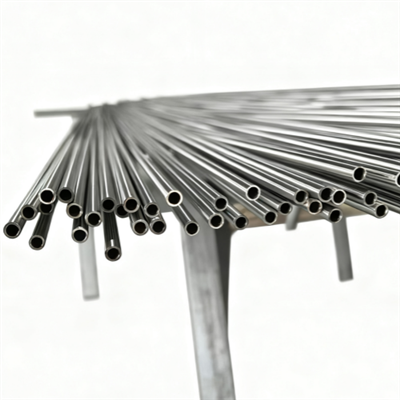Hey there! As a supplier of 904L Stainless Steel Pipe, I often get asked about the straightness tolerance of these pipes. So, I thought I'd write this blog to share everything I know about it.
First off, let's understand what straightness tolerance means. In simple terms, it's the allowable deviation from a perfectly straight line for a given length of the pipe. For 904L stainless steel pipes, straightness is super important. These pipes are used in a variety of industries, like chemical processing, food and beverage, and marine applications. In these industries, a pipe that's not straight can cause all sorts of problems. For example, in a chemical processing plant, a bent pipe might disrupt the flow of chemicals, leading to inefficiencies or even safety hazards.
The straightness tolerance of 904L stainless steel pipes is typically specified by standards and customer requirements. There are several international standards that govern the manufacturing of these pipes, such as ASTM (American Society for Testing and Materials) and EN (European Norm). These standards set out the acceptable limits for straightness.
ASTM standards, for instance, have different requirements depending on the type and size of the pipe. For seamless 904L stainless steel pipes, the straightness tolerance is usually more strict compared to welded pipes. Generally, for smaller diameter pipes, the allowable deviation per unit length is lower. This is because smaller pipes are often used in more precise applications where even a small bend can cause issues.
Let's talk about how the straightness tolerance is measured. Manufacturers use a few different methods. One common way is to use a straightedge. A long, straight bar is placed along the length of the pipe, and the gap between the straightedge and the pipe is measured at various points. This gives an indication of how straight the pipe is. Another method involves using laser measurement systems. These are more accurate and can quickly detect even the slightest deviations.
Now, you might be wondering why the straightness tolerance matters so much. Well, as I mentioned earlier, it's all about functionality. In a piping system, a straight pipe ensures smooth flow of fluids or gases. It also makes installation easier. If the pipes aren't straight, it can be difficult to connect them properly, which can lead to leaks and other problems down the line.
In addition to functionality, straightness also affects the appearance of the pipes. In some applications, like architectural or decorative uses, the visual appeal of the pipes is important. A bent or crooked pipe just doesn't look good and can detract from the overall aesthetic of the project.
As a supplier of 904L Stainless Steel Pipe, we take straightness tolerance very seriously. We have strict quality control measures in place to ensure that all our pipes meet or exceed the relevant standards. Our manufacturing process is designed to produce pipes with excellent straightness. We use state - of - the - art equipment and techniques to minimize any deviations.
We also offer a range of 904L stainless steel pipes with different straightness tolerances to meet the specific needs of our customers. Whether you need pipes for a high - precision chemical process or a less critical general - purpose application, we've got you covered.
It's worth noting that the straightness tolerance can also be affected by factors like handling and transportation. If the pipes are not handled properly during loading, unloading, or shipping, they can get bent. That's why we take extra care when packaging and transporting our pipes to prevent any damage.
Another thing to consider is that the straightness tolerance might be related to the cost. Pipes with a tighter straightness tolerance usually cost more to manufacture. This is because it requires more precise manufacturing processes and more rigorous quality control. However, in many cases, the extra cost is worth it, especially if the application demands high precision.
If you're in the market for 904L stainless steel pipes, it's important to discuss your straightness requirements with your supplier. Make sure you understand the standards and tolerances that apply to your project. And don't be afraid to ask questions about how the pipes are manufactured and tested for straightness.
We also supply 254SMO Stainless Steel Pipe, which has its own set of straightness tolerance requirements. Similar to 904L pipes, 254SMO pipes are used in demanding applications where straightness is crucial.
In conclusion, the straightness tolerance of 904L stainless steel pipes is a critical factor that affects their performance, appearance, and usability. As a supplier, we're committed to providing high - quality pipes that meet the strictest straightness standards. If you're interested in purchasing 904L stainless steel pipes or have any questions about straightness tolerance, feel free to get in touch. We'd be happy to help you find the right pipes for your project.


References:
- ASTM standards for stainless steel pipes
- EN standards for stainless steel pipes





